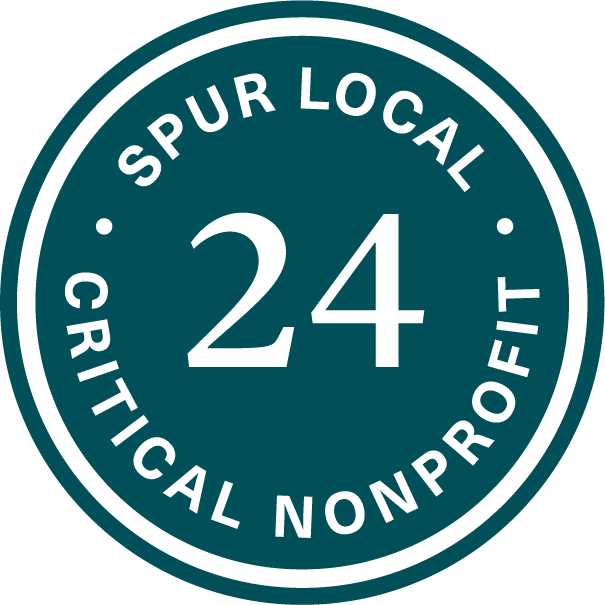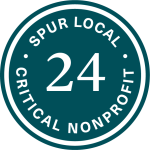One of the biggest issues with benefits cliff is the abrupt nature in which recipients of benefits can lose them, just as they begin to develop financial stability. Many families lose all the benefits they were once eligible for at one time, which leaves them continuously impeded despite their rising income. The effect of losing the benefits in this manner tends to nullify whatever increased income they are receiving. However, if the benefits were gradually phased out as monthly incomes rise, that can give families the ability to adjust.
Synchronizing Benefit Rules:
For a gradual decline off of benefits to work, benefit programs should coordinate with one another. One mechanism already in place that allows for coordination is known as Express Lane Eligibility (ELE).[1] ELE was designed to give states a mechanism to use information collected by other programs or agencies to determine an individual’s eligibility for Medicaid and The Children’s Health Insurance Program (CHIP). Using the ELE, states can adequately ensure that children “eligible for Medicaid or CHIP have a fast and simplified process for having their eligibility determined or renewed.”[2] Programs that can be analyzed under the ELE are called express lane agencies, and they include Supplemental Nutrition Assistance Program (SNAP), Temporary Assistance for Needy Families (TANF), and Women, Infants, and Children (WIC) (a supplemental nutrition program for women and infants) among others. Essentially, after a family provides information that verifies them for one program, Medicaid or CHIP may use that data to verify eligibility for health coverage. Although ELE’s were traditionally used to assist with enrolling recipients of one program for others, ELE’s utility can also be expanded to counteract the benefits cliff. Experts believe that by synchronizing eligibility rules and regulations, recipients will be better equipped at navigating programs and understand the implications of their financial decision-making.[3] Aligning eligibility determination procedures and timelines can help people so they do not lose their benefits at one time.[4]
Benefits Navigators:
The American public welfare system is extraordinarily complex and difficult for the average person to understand and navigate. Often, those in need of support do not have the specialized training and knowledge, nor the time to research these questions on their own, that would equip them to understand what benefits they are eligible for, how to apply for these benefits, and how those benefits might be impacted by rising earned or unearned income. Many pilots have addressed these challenges by making “benefits specialists” or “benefits navigators” available to participants. These counselors assist guaranteed income participants who also receive other benefits by ensuring they understand what benefits might be impacted by the GI payments and helping them balance the consequences of losing some benefits. At the end of pilots, benefits navigators often provide support to participants as they transition out of the program, as well. Navigators help identify other benefits that participants may be eligible for and walk them through the application process. They might also strategize with participants about how to maintain their income and where to seek other community resources. Similar counselors are often provided to Medicaid beneficiaries who are transitioning from facility-based settings to community living. These navigators support patients for a year as they transition back into everyday life. Having such counselors for financial benefits can be highly beneficial to participants who also intend to transition back to adequate standards of living without benefits.
Tax Credits:
Expanding tax credits can be another way to cushion the transition off of benefits programs. The Earned Income Tax Credit (EITC) which, unlike benefit cliffs, incentivizes work by increasing support as families’ incomes rise, is known as one of the most successful anti-poverty programs in the United States.[6] Expanding the EITC while also implementing it with state EITC policies can effectively decrease the detriments of the benefits cliff as people slowly transition off of benefits.[7] For example, New York state and New York City provides supplemental EITC which has phase-out periods, that result in no benefits cliff for recipients.[8]
A district child tax credit is another credit that has the potential to substantially decrease the impacts of the benefits cliff. Ultimately, refundable tax credits counter declining benefits as earnings rise, thus allowing recipients to phase out of government benefits assistance. That said, delivering these refundable tax credits as monthly payments, as opposed to the traditional lump sum, would go even further to support families transitioning off benefits.
Ultimately, to counteract the benefits cliffs, it is essential that the government create new mechanisms that will make their current benefit programs serve their purpose of helping families achieve adequate living standards. This endeavor must be adopted both federally and within local and state governments in order for a widespread change to take effect.
[1] Medicaid.gov, Express Lane Eligibility for Medicaid and CHIP Coverage (Aug. 6, 2021) https://www.medicaid.gov/medicaid/enrollment-strategies/express-lane-eligibility-medicaid-and-chip-coverage/index.html
[2] Id.
[3] Olanika Ojelabi and Susan Crandall, Mitigating the Benefits Cliff: A Linchpin for Economic Recovery, (Jan. 19, 2021), https://spotlightonpoverty.org/spotlight-exclusives/mitigating-the-benefits-cliff-a-linchpin-for-economic-recovery/
[4] Pedro Perez, Examining, understanding, and mitigating the benefits cliff effect, ,https://www.ahaprocess.com/examining-understanding-and-mitigating-the-benefits-cliff-effect/
[5] Id.
[6] Olanika Ojelabi and Susan Crandall, Mitigating the Benefits Cliff: A Linchpin for Economic Recovery, (Jan. 19, 2021), https://spotlightonpoverty.org/spotlight-exclusives/mitigating-the-benefits-cliff-a-linchpin-for-economic-recovery/
[7] Id.
[8] FWPA, Pushed to the Precipice: How Benefits Cliffs and Financial Gaps Undermine the Safety Net for New Yorkers, 31, (Apr. 2021), https://www.fpwa.org/wp-content/uploads/2023/05/2104019_FPWA-benefitcliffs-rev2_FINAL_4.19.2021.pdfies



